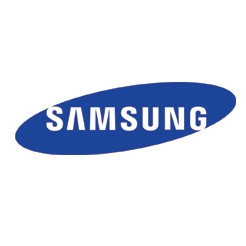Samsung Mobiles: Smartphone strategy for the Indian market

Samsung Mobile’s line-up of smartphones and tablets has helped the handset maker rally a significant share in a market that is largely dominated by Nokia. Samsung sold 12.6 million smartphones in the quarter ended March 2011, boosting its global smartphone market share by 7.4 percentage points from the previous year to 12.2 per cent. It now ranks fourth after Nokia, Apple and Research in Motion (RIM). Samsung is only 1.2 percentage points behind RIM and is expected to grab the number three spot in 2011 if it maintains its current growth rate. Advance orders for Samsung’s Galaxy S2, which was released in April 2011, surpassed 3 million units within a week of the launch, posing a threat even to Apple. At this rate, its sales are expected to top 14 million units in the current quarter.
Focus on India
India is the fastest growing telecom market in the world and presents an attractive opportunity for handset makers like Samsung. As per a GFK Nielson report, the Indian mobile handset market was pegged at around 155 million units in 2010. With the country adding 20 million mobile customers every month, the mobile device market is expected to grow at over 16 per cent year-on-year. Driven by the launch of 3G services, the smartphone market alone is likely to grow at over 50 per cent per annum for the next two years.
The Korean handset maker’s smartphone strategy has clicked well in the Indian handset space. The company opened its smartphone account in India in June 2010 with the launch of its Galaxy S and Wave models, and now has over 12 smartphones on almost all the popular platforms including Android, Windows and its internally developed software, Bada. Samsung had a share of 10-15 per cent in the smartphone market as of January 2011, and is aiming to notch it up to 40 per cent by end-2011.
According to company officials, in 2011, Samsung’s mobile handset division will be driven by two key factors – touchscreens and smartphones. In this segment, the company has also launched its tablet PCs. Thanks to the hugely positive response that the Tab has received across India, Samsung is targeting a 50 per cent share of the Indian tablet market in 2011. While tablet PCs are still a niche segment in the country, if Samsung positions its products well, it could well succeed in meeting its targets. A key area of focus for Samsung will be the enterprise segment, which is showing an increased demand for such devices.
In all, Samsung has over 50 handset models in India, ranging from entry-level to mid-range and high-end smartphones. According to a GFK Nielsen report, the company’s overall market share stands at around 23 per cent of the Indian mobile market in value terms.
Manufacturing and R&D
Samsung has two manufacturing units in India, in Chennai and Noida, and produces around a million units of mobiles per month. While the company currently manufactures only its entry-level Guru series at these units, it plans to start producing smartphones as well in India going forward.
The company has also increased its focus on applications to provide users with a wide range of applications across various platforms like Android, Windows and Samsung’s own Bada. The company is reportedly working with around 800 application developers in the country to develop customised applications for the Indian consumer.
However, offering innovative products in the global and Indian markets warrants a strong focus on R&D and Samsung is not cutting corners. Over 9 per cent of the company’s global expenditure is spent on R&D every year. The company has a team of 3,000-odd engineers across its two R&D facilities in India, customising its smartphones and tablet PCs, fine-tuning its mobile operating system, creating applications, etc.
Samsung has two software development centres in the country – the Samsung India Software Centre (SISC) in Noida, Uttar Pradesh, and Samsung Electronics India Software Operations (SISO) in Bangalore. The latter is already working on more advanced technologies like 4G. In fact, the mobile communication team at SISO is at advanced stages of developing devices on technology platforms including LTE, HTML5 and Android OS for tablets and dolphin browsers in smartphones. The Bangalore R&D centre has collaborated on global projects and developed a dongle for 4G mobiles that has been launched in Norway, Sweden and Finland.
The road ahead
Samsung sees the increasing demand for 3G-enabled handsets as an opportunity to grow in 2011. According to data from Gartner, the sales of 3G-enabled handsets comprised 16.7 per cent of the industry’s total sales in 2010, up from 9.2 per cent in 2009. By 2011-13, 3G device sales are expected to account for 69 per cent of total sales. With an array of 3G devices launched for the Indian consumers, Samsung has created a market demand for 3G smartphones and is also offering users access to content and downloadable application software. At present, Samsung has 17 handsets with 3G applications in India, with prices ranging from Rs 8,990 to Rs 29,290.
However, the company needs to watch out for competition. LG, for instance, is lining up several new smartphones. Its new mid-priced Optimus One handset has done well and LG has announced its target to double its global smartphone shipments to 15 million units in 2011
- Most Viewed
- Most Rated
- Most Shared
- Related Articles
- Brand Idea: Focus on 3G, rural areas and...
- Samsung Mobiles: Smartphone strategy for...
- BSNL: Exploring revival strategies
- Reliance Jio Infocomm: Set to change the...
- Reliance Infotel: Strongly placed to tap...
- Tulip Telecom: On a sticky financial wic...
- MTNL: Survival strategies
- Bharat Sanchar Nigam Limited: Attempts t...
- Aircel: Increasing its footprint
- Vodafone India: Growth despite regulator...
| Your cart is empty |





